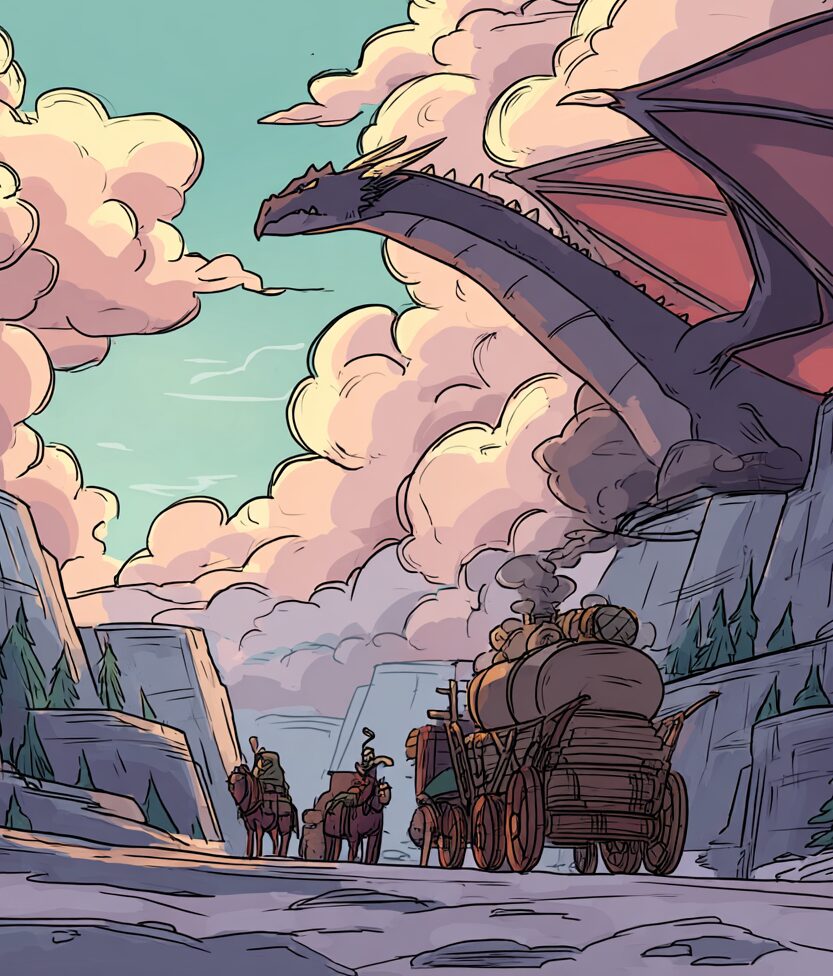
When your landlord breathes fire: Dragons as Masterminds
Practical advice for surviving (or profiting from) dragon market manipulations.
Master Korven adjusted his spectacles and peered down at the ledger spread before him, his weathered hands—bearing the distinctive scars of dragon fire—tracing columns of figures that would have made an accountant weep. The Merchant Guild of Redmoor had called this emergency meeting for good reason, and as one of the few people in the room who’d actually survived multiple face-to-face encounters with a red dragon and lived to audit the experience, Korven was uniquely qualified to explain their predicament.
“Gentlemen,” Korven began, his voice carrying the authority of three decades of adventuring, “we have a problem that transcends normal business concerns. Our territories have acquired what I can only describe as the most expensive landlord in the known world—and trust me, I’ve met landlords who’d make demons weep.”
Young Apprentice Trader Millicent raised her hand tentatively. “Master Korven, surely you’re not referring to the… creature that’s taken residence in Mount Pyrros?”
“I’m afraid I am, my dear. Cindrek the Ashlord has established what economists might generously call a ‘tributary economic system’ across our region. What the rest of us call extortion with wings.”
The guild master unfurled a map dotted with red markers—each one representing what had once been profitable trade routes and was now, essentially, toll booths with teeth. “In the six months since this dragon established his lair, our cost of doing business has increased by factors I struggle to calculate without resorting to profanity. And I’ve learned some very creative profanity in days, let me tell you.”
The Art of Draconic Taxation
Understanding how red dragons monetize their territories requires recognizing a fundamental truth: these creatures are not just monsters, but sophisticated predators who’ve perfected the art of wealth extraction.
Korvan pointed to the first cluster of markers. “Here, along the Thornbrook Pass—our primary trade route to the eastern kingdoms—Cindrek has instituted what he calls ‘transit fees.’ Any caravan carrying more than fifty gold pieces worth of goods must surrender twenty percent of their cargo value. Refuse, and the dragon incinerates the entire shipment.”
Millicent scribbled notes furiously. “But Master, doesn’t that make trade unprofitable?”
Korven’s laugh was bitter and carried the edge of someone who’d once tried to negotiate with a creature that could melt steel with its breath. “Oh, my dear child, if only it were that simple. You see, red dragons are perhaps the most sophisticated predators in existence. Cindrek has studied our trade patterns with the meticulous attention of a master accountant—and with the temper of an active volcano.”
The older adventurer turned to a second cluster of markers. “Here, in the mining settlements around his lair, the dragon has established exclusive purchasing agreements. All gems, precious metals, and magical ore must be offered to him first, at prices he deems ‘appropriate’—typically about thirty percent below market value. The miners have no choice; refuse, and their operations become craters filled with molten rock and the lingering scent of regret.”
“But surely,” interrupted Trader Barlowe, “the regional authorities—”
“Have been completely outmaneuvered,” Korven finished with what might have been satisfaction—though whether grim or pleased was difficult to determine. “Baron Daldric sent a company of knights to ‘negotiate’ with the dragon three months ago. Cindrek received them in his lair, served them wine in goblets worth more than most nobles’ annual revenues, and presented them with a detailed analysis of why tribute payments were more beneficial to the realm than the costs of military resistance. I heard the presentation was quite… compelling.”
The room fell silent. Millicent finally whispered, “He… he gave them an economic presentation?”
“Complete with charts. Showing, no doubt, projected casualties, infrastructure damage costs, and refugee displacement expenses versus tribute revenue. The dragon had done his research, you see—or perhaps had it done for him by someone with considerable expertise in both economics and local affairs.” Korven’s smile was brief and oddly knowing. “Red dragons don’t just hoard wealth—they study it with the obsessive attention of scholars who happen to be able to melt anyone who questions their methodology. They understand supply chains, market manipulation, and economic leverage better than most kings understand their own treasuries.”
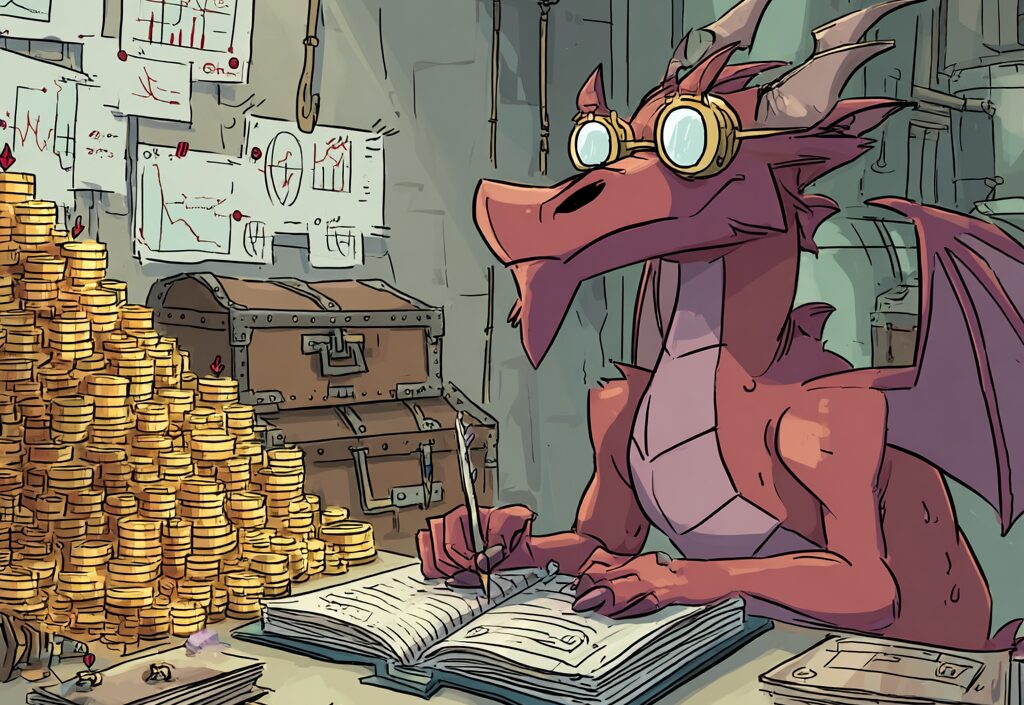
Market Manipulation: The Fire-Resistant Materials Racket
Korven turned to a detailed section of his map showing the mountainous regions surrounding the dragon’s lair. “Now, here’s where Cindrek has truly demonstrated his economic genius. He’s created what scholars might call a ‘controlled scarcity market,’ and what I call ‘the most brilliant racket I’ve ever seen, and I once watched a halfling sell the same bridge to three different buyers.'”
“The dragon sits atop the largest known deposit of rubies in the region—stones essential for crafting flame-resistant armor and fire-based magical items. Before his arrival, these gems could sell for thousands of gold pieces per quality stone. Today, they command eight times that, when you can find them at all.”
Young Millicent looked confused. “Wouldn’t higher prices reduce demand?”
“Under normal circumstances, yes. But Cindrek has engineered a fascinating market situation—and by fascinating, I mean ‘utterly diabolical.’ He releases precisely enough fire opals to meet a small percent of demand, creating artificial scarcity. Meanwhile, his presence has dramatically increased demand for fire-resistant equipment among adventurers, mercenaries, and even common folk living in his territory. The economic result is a quadrupling of prices with no reduction in sales volume. It’s almost like he’s running a protection racket, except the protection is from himself.”
Korven gestured to a series of trade documents. “Cindrek has cornered the market on fire-resistant materials while being the primary reason anyone needs fire-resistant materials. He controls the supply of rubies, flame-resistant metals, and salamander leather—all essential components for surviving encounters with, well, him. It’s like a blacksmith who burns down houses and then sells the only fireproof materials in town.”
“The dragon has created a closed economic loop where his very existence drives demand for products only he can provide. Every piece of flame-resistant armor sold makes someone marginally more likely to survive an encounter with him, but also puts more gold into his hoard. He’s literally profiting from people’s attempts to defend themselves against him. I have to admire the efficiency, even as it drives me to drink.”
The Service Economy of Fear: Dragon Compliance Officers
Perhaps the most economically significant—and absolutely ridiculous—development has been the emergence of what we are calling the “dragon service economy.” This represents an entire industry built around managing relationships with Cindrek, which sounds dignified until you realize what that actually means.
Korven spread out a collection of business licenses and service contracts, chuckling grimly. “Consider the firm of Bloodworth & Associates, Dragon Tribute Consultants. They charge merchants five percent of their annual tribute payments in exchange for negotiating optimal payment schedules, identifying tax-deductible expenses under draconic law, and providing cultural consulting on proper gift presentation protocols. Yes, you heard correctly—we now have accountants who specialize in dragon tax law.”
Young Millicent looked confused and slightly horrified. “Wait, there’s a draconic tax code?”
“Oh my dear, Cindrek is an obsessive record-keeper,” Korven chuckled, the sound carrying years of weary experience. “He maintains detailed ledgers of every transaction in his territory, written in his own claw in what I can only describe as ‘aggressively neat handwriting.’ He’s established precedents for tribute reductions based on demonstrated economic hardship, loyalty bonuses for long-term compliance, and even seasonal payment plans for businesses with irregular revenue cycles. The dragon runs a more organized tax system than most kingdoms.”
“But here’s where it gets truly absurd,” Korven continued, pulling out an ornate business card. “Allow me to introduce you to the concept of ‘draconic cultural consultants.’ Madame Zelara’s Dragon Protocol Academy charges 150 gold pieces per session to teach merchants proper etiquette for tribute negotiations. Her curriculum includes: correct posture—apparently, slouching is considered an insult worthy of incineration—appropriate gift-wrapping techniques, and diplomatic language in draconic.”
Trader Barlowe shook his head in amazement. “You’re telling me… people are paying to learn how to give money to the dragon more effectively?”
“They do. Indeed.” Korven confirmed, his tone growing more serious. “Madame Zelara’s claims graduates have a seventy-seven percent higher success rate. Her most popular course is ‘Advanced Compliment Techniques for Addressing Draconic Superiority’—apparently, there’s a very specific way to praise a dragon’s magnificence that doesn’t sound sarcastic. Who knew?”
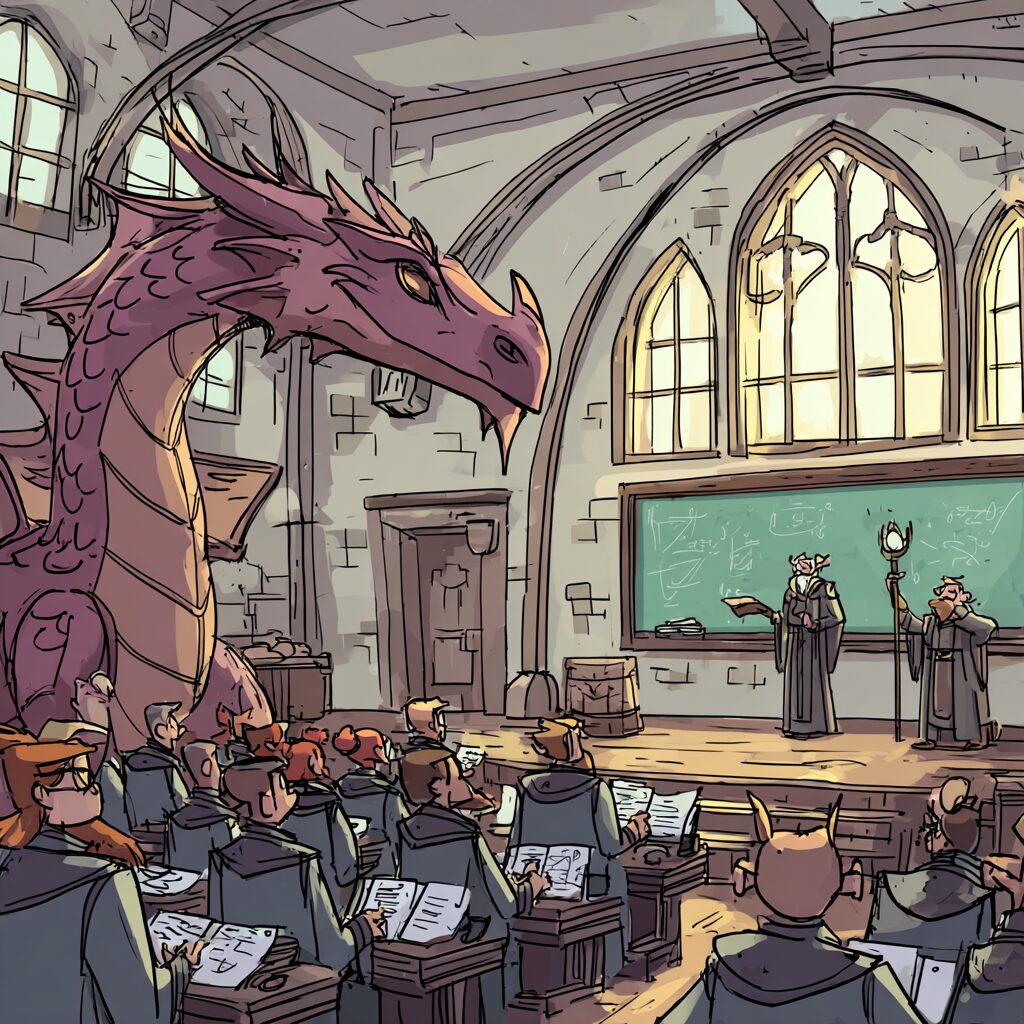
“The most successful service provider, however, is the Emberscale Security Company, which provides ‘dragon compliance monitoring’ services. They help businesses ensure their tribute payments are precisely calculated, properly presented, and delivered according to established protocols. Their insurance against draconic audit penalties has become essential for any major commercial operation. Because yes, Cindrek conducts audits. With charts. And footnotes.”
Dual Taxation and Parallel Power
Cindrek has achieved something the local thieves guild has been attempting for years: the establishment of a parallel government structure funded entirely through economic extraction, operating alongside the traditional feudal system.
Korven moved to a final map showing the broader regional impacts. “Cindrek has essentially established his own economic principality. His territory now operates under a dual taxation system: traditional feudal levies to Baron Daldric, plus draconic tribute payments that function as a parallel tax structure. It’s like having two governments, except one of them breathes fire and is a considerably better financial planner.”
“The dragon has, in effect, created a shadow government financed through systematic wealth extraction. And here’s the truly disturbing part—in some ways, it’s more efficient than traditional taxation.”
Millicent looked skeptical. “How can extortion be more efficient than legitimate government?”
“Because the dragon’s incentives are perfectly aligned with economic productivity,” Korven explained. “Baron Aldric’s tax collectors are bureaucrats motivated by steady salaries. They have no personal stake in whether the regional economy grows or shrinks, as long as they collect their assigned quotas. Cindrek, however, has a direct financial interest in maximizing the long-term wealth generation of this territory.”
“When the Gildenheart Mine faced collapse due to flooding, Baron Daldric’s administration offered a low-interest loan that would have taken three years to process. Cindrek simply hired a team of earth elementals to drain the mine in exchange for guaranteeing him first option on all mithril extraction. The mine was operational again within days.”
The guild master pointed to several economic indicators on his chart. “Regional unemployment has… actually decreased since the dragon’s arrival. Demand for specialized goods and services has created new job categories: dragon-tribute assessors, flame-resistant crafters, treasure-transport security teams, and our draconic cultural consultants”
“The dragon has created a more dynamic economy than the previous feudal system ever managed. Sure, it’s terrifying, exploitative, and completely unsustainable in the long term—but in the short term, it’s remarkably effective at enriching Cindrek.”
Historical Parallels: When Real-World Economics Mirror Fantasy Tyranny
Korven paused in his presentation to refill his pipe, a habit developed during long nights on the road. “Now, for those of you with a taste for scholarship—or those who think I’m making all this up—it’s worth noting that Cindrek’s model isn’t entirely without precedent. I’ve studied similar patterns in accounts from other realms and distant lands.”
He pulled out a worn tome filled with trade reports from foreign scholars. “Consider the historical accounts of what some distant-world economists call ‘company towns’ and ‘vertical monopolies.’ There are records of powerful merchant houses that controlled not just the resources in a region, but also the infrastructure needed to extract those resources, the transportation to move them, and even the shops where workers could purchase necessities.”
“These merchant lords would establish mining or logging operations in remote areas, then ensure they were the only source of employment, housing, and goods for hundreds of miles. Workers had no choice but to accept company wages, live in company housing, and shop at company stores—often ending up in debt to the very entity that employed them.”
DMs note – A perfect real-world parallel to this is the coal mining company towns of Appalachia in the late 19th and early 20th centuries. These towns were established by powerful coal companies in remote areas of Kentucky, West Virginia, and Pennsylvania, where the company owned everything—the mines, the housing, the general store, even schools and churches.
Workers were paid in scrip, a company-issued currency that could only be used at company stores. Prices were often inflated, and since there were no competing businesses for miles, workers had no choice but to buy essentials from their employer—frequently at a loss. This created a cycle of debt bondage, where miners owed more to the company than they earned, effectively trapping them.
The setup was a textbook example of a ‘vertical monopoly’: the company controlled the entire supply chain—from extraction to distribution to consumption.
Millicent looked thoughtful. “That sounds remarkably like Cindrek’s system.”
“Precisely,” Korven replied, adjusting his spectacles. “The key insight is that both systems create what scholars call ‘economic capture’—the affected population has no realistic alternatives, so they must accept whatever terms are offered. The company towns achieved through geographic isolation what our dragon achieves through the threat of incineration.”
“There are also accounts of what some call ‘protection rackets’—criminal organizations that would create problems for businesses, then offer to solve those same problems for a fee. The criminals would break windows, then sell window repairs. They’d start fires, then offer fire protection services.” He gestured meaningfully. “Our draconic friend has simply streamlined the process by being both the threat and the solution provider.”
The Economics of Collapse: Why Draconic Economies Self-Destruct
Millicent’s expression grew more serious. “Surely this draconic economy isn’t sustainable in the long term?”
Korven’s turned to his final set of charts. “My analysis suggests that maybe it is not. First, the tribute extraction rate is well above the regional economy’s natural growth rate. This means Cindrek is slowly consuming the economic base that generates his revenue. Mathematical projections suggest the system will collapse within fifteen to twenty years unless tribute rates are reduced or new wealth sources are developed. And… expecting a red dragon to voluntarily reduce tribute payments is like expecting an active volcano to stop erupting.”
“Second, the dragon’s tyrannical practices stifle innovation and competition. While short-term efficiency has improved, long-term economic dynamism will decline. Businesses will be focused on meeting tribute obligations rather than developing new products or expanding markets.”
Millicent looked worried. “What happens when the system collapses?”
“Several scenarios are possible,” Korven replied grimly, unconsciously touching one of his dragon-fire scars. “If Cindrek recognizes the sustainability problem, he might implement economic reforms—reducing tribute rates, investing in infrastructure development, or expanding his territory to include new revenue sources. Red dragons are intelligent enough to understand long-term planning, when it serves their interests.”
“Alternatively, the dragon might attempt to solve the sustainability problem through conquest, expanding his economic territory by absorbing neighboring regions, likely by using public threats for extortion, combined with actual targeted incineration. This would provide new revenue sources but would also create larger-scale disruption.”
“The third possibility—and perhaps the most likely—is that adventuring parties will eventually succeed in killing Cindrek before the economic collapse occurs. This would trigger some chaos as the tributary system collapses, but would allow for eventual economic recovery under more traditional structures.”
Adventure Hooks for DMs: Economic Warfare Against the Ashlord
A smart adventuring party could recognize that weakening a dragon’s economic power base could be more effective than direct confrontation. Cindrek’s economic stranglehold presents unique opportunities for adventuring parties willing to think beyond traditional “kick down the door and fight” approaches. Potential adventure leads:
- Ruby Smuggling Ring: Cindrek’s monopoly on fire-resistant materials depends on controlling the supply chain. Adventurers could establish a smuggling operation to bring alternative fire-resistant materials from distant markets, or discover new sources outside the dragon’s territory (maybe by hunting Remorhaz, Mephits, Hell Hounds or Devils). Success could crash the artificial scarcity market, reduce his tribute income, and provide the party with some protection.
- The Cultural Consultant Infiltration: With draconic cultural consultants now essential for business operations, adventurers could establish their own consulting firm to gain access to merchant networks and tribute payment systems, and maybe even access to Cindrek himself. This provides excellent intelligence-gathering opportunities and allows for subtle sabotage of the tribute system from within.
- The Economic Siege Strategy: Rather than attacking the dragon directly, adventurers could organize a coordinated embargo—convincing merchants to temporarily cease operations in Cindrek’s territory, disrupting his revenue streams enough to force him into a negotiating position or draw him out of his lair.
Of course, storming the lair is going to be super fun as well – these might be suggested as tactics to weaken or enrage the dragon prior to a more frontal assault. Not every adventurer is into subtle economic strategy – looking at you barbarian.
Parts: The Economics of Dragon Harvesting
The value of draconic remains is crucial for any adventurer.
- Harvesting Considerations: Red dragon harvesting might require immediate action. The creature’s internal fires could continue burning after death, potentially destroying valuable components. You might rule that components must be extracted within the first hour unless the body is cooled.
- Dragon Scale Armor Plating: The scales of an adult red dragon represent the premium material for fire-resistant armor construction. Master armorers will pay handsomely for scales from dragons that can be used to forge fire resistant Dragon Scale Mail. and Armor of Fire Resistence.
- Dragon Blood Distillation: Fresh red dragon blood can serve as the primary component in fire immunity potions and flame weapon enchantments.
- Heart of the Inferno: The heart of an ancient red dragon represents one of the most valuable single components in magical crafting. Used primarily in the creation of artifacts related to fire magic and temperature control, and Orbs of Dragonkind.
- Dragonclaw and Fang Applications: Red dragon claws and fangs provide excellent materials for weapon enchantments and magical blade construction.
- Bone Powder and Structural Components: Intact long bones are suitable for staff of fire construction. The skull of a red dragon is also suitable for use as a ceremonial focus and represents a unique item that can sell for a hefty sum to collectors or institutions seeking impressive displays of adventuring success.
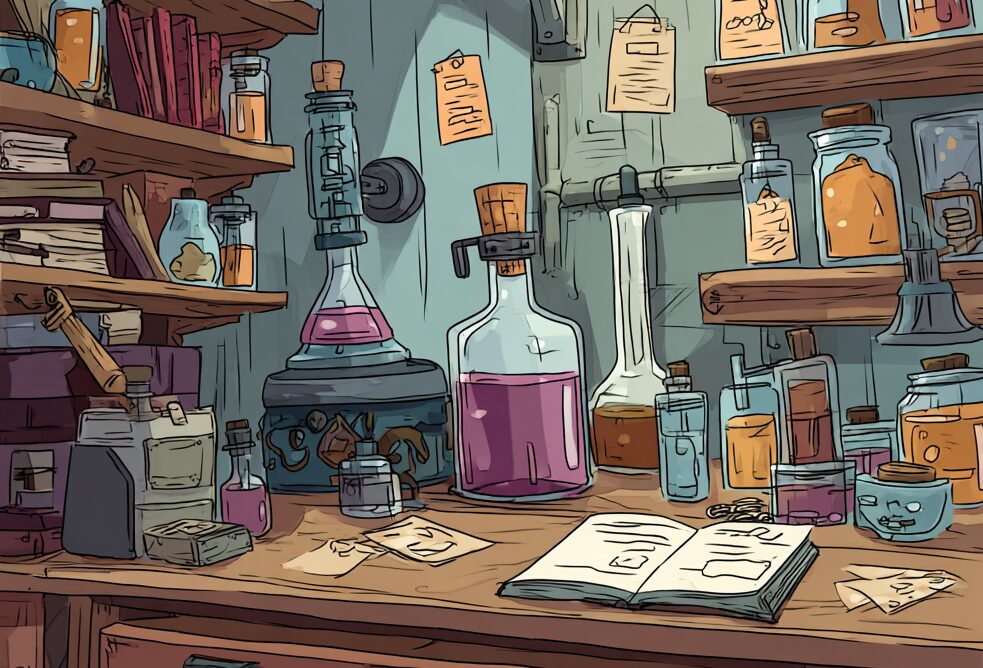
In Conclusion: Alliances
Korven closed his ledgers and looked around the room, but the weary expression had transformed into something altogether different.
“The most important lesson for merchants,” Korven began, his voice taking on a tone of authority that seemed to come from somewhere other than mere experience, “is that Cindrek represents both unprecedented opportunity and extreme risk. Businesses that adapt quickly can achieve remarkable profitability. Those that resist face certain destruction—and trust me, I’ve seen what draconic ‘certain destruction’ looks like. I’ve also seen what cooperation looks like.”
He stood slowly, and somehow the room felt smaller. “Which brings me to the actual purpose of tonight’s meeting. You see, my friends, Cindrek the Ashlord has been most impressed with the efficiency of tonight’s… educational session. Information gathering, you might call it. He’s always appreciated good intelligence on the economic concerns of his territory.”
Millicent’s face went pale. “You’re… you work for the dragon!”
“Work for?” Korven chuckled, the sound now carrying an entirely different quality. “My dear child, I prefer ‘advisor’ or ‘consultant.’ Though I suppose ‘senior intelligence operative’ would be more accurate”
Trader Barlowe started to rise from his chair, but Korven’s hand moved to a scabbard at his belt – “Please, sit. We’re not quite finished with tonight’s business.”
“You see, gentlemen, tonight’s presentation served multiple purposes. First, to assess the sophistication of the local merchant community—quite impressive, I must say. Second, to identify the key players and their approximate revenue streams based on their questions and reactions. And third, to establish the framework for Cindrek’s new ‘Merchant Advisory Council’ program.”
Korven spread a new set of documents across the table—contracts written in that same aggressively neat handwriting he’d mentioned earlier. “Each of you has been selected for a partnership opportunity with our draconic overlord. Think of it as… mandatory consulting fees. Fourty percent of your annual gross revenue, paid quarterly, in exchange for protection, market access, and the invaluable service of keeping you informed about economic developments in the territory.”
“This is extortion,” Barlowe whispered.
“This is business,” Korven corrected pleasantly. “And before you consider any… unwise responses, I should mention that Cindrek is remarkably well-informed about things like scheduling, the locations of warehouses, storehouses, and… family members. The sort of information that would be quite useful for a creature who often settles business disputes through selective incineration.”
Millicent found her voice, though it shook. “You’ve been working for him this entire time!”
“My dear, I helped design this entire system. Who do you think taught Cindrek about supply chain management? Dragons may be naturally greedy, and that makes them great capitalists, but they need advisors who understand the finer points of sustainable wealth extraction.” Korven’s smile was almost paternal. “Those charts he presented to Baron Aldric’s knights? My work. That lovely presentation on projected casualties versus tribute revenue? Also… mine.”
DM Note: OK, so according SRD an adult red dragon’s intelligence is 16, and an ancient dragon’s intelligence is 18. Thats not supra-genius, and not as high as their green and blue cousins, but its still probably bright enough to outmaneuver the local merchants and understand complex economic principles (I mean, I’m not all that bright and here I am writing a blog about them…) – So if you don’t like the dragon with a merchant advisor henchman bit feel free to drop it. You don’t need economic support staff for your big bad if thats more to your campaign liking – but I still think it makes for good story…
“The beauty of it all,” he continued, sealing the contracts with wax that drew faint smoke, “is that everyone benefits. The regional economy becomes more efficient, employment increases, and businesses achieve remarkable profitability—as long as they remember their obligations to management. To the ones in charge. Let’s call it ‘executive oversight.'”
He gathered his materials with practiced efficiency. “These contracts are quite standard—you’ll find the terms reasonable, the payment schedules flexible, and the penalty clauses… comprehensive. I’ll be back next month to collect the first quarter’s contributions and to discuss any concerns you might have about your new business partnership.”
As Korven moved toward the door, he paused and looked back with what might have been genuine fondness. “Oh, and if you are thinking about a hiring adventurers? A dragon-hunting investment? I’d reconsider that particular venture. Cindrek takes a very personal interest in threats to his economic base. Very personal indeed. In fact, you’d be better off running those sorts out of town.”
The door closed behind him, leaving the Merchant Guild of Redmoor to contemplate their new understanding of the red dragon economy—and their place within it.

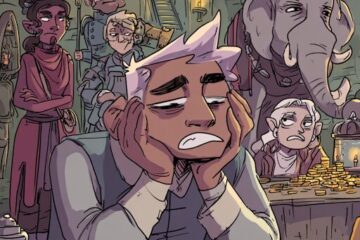
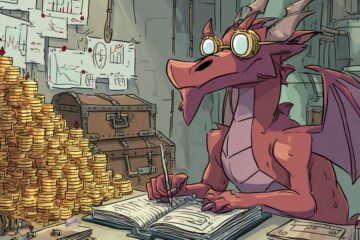
0 Comments